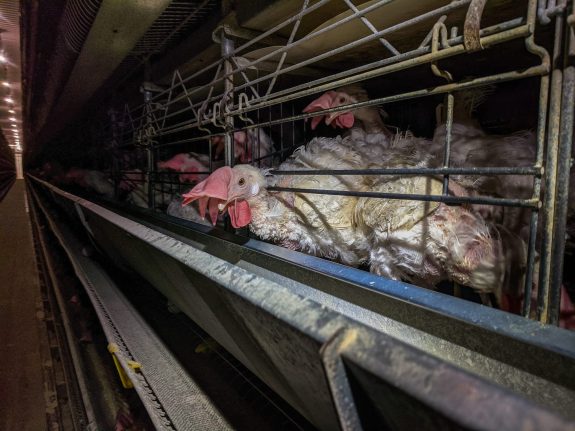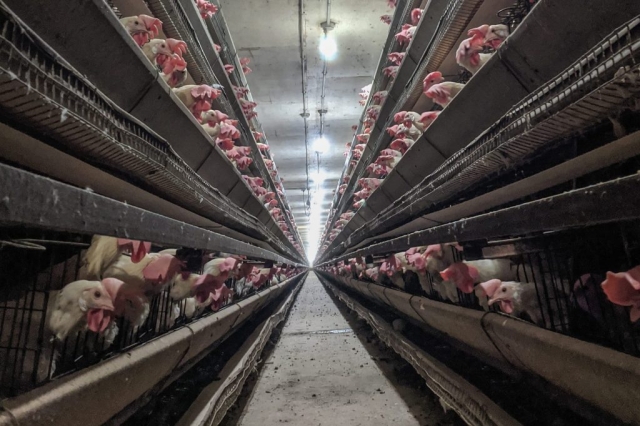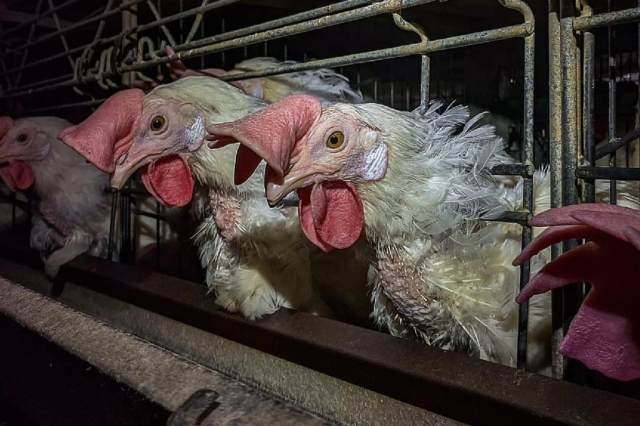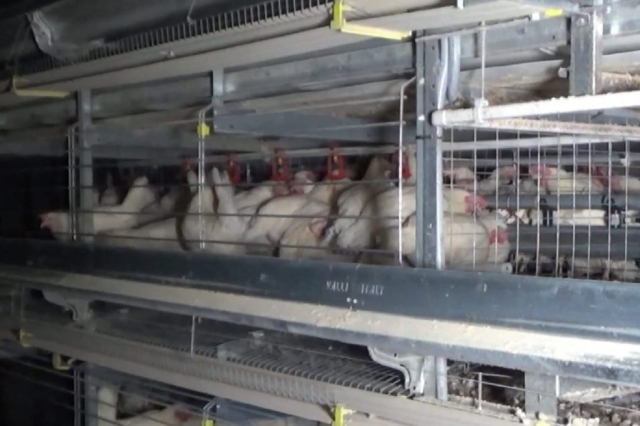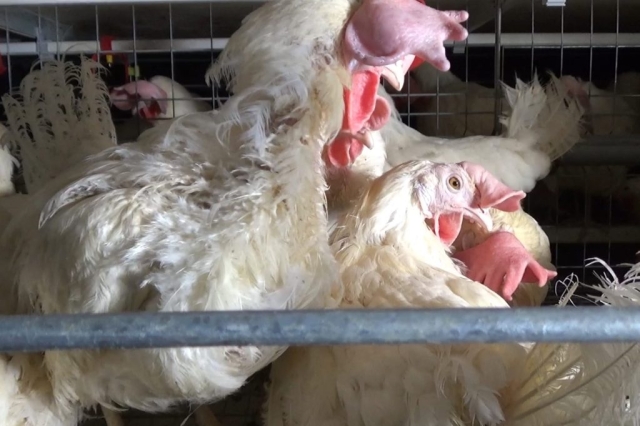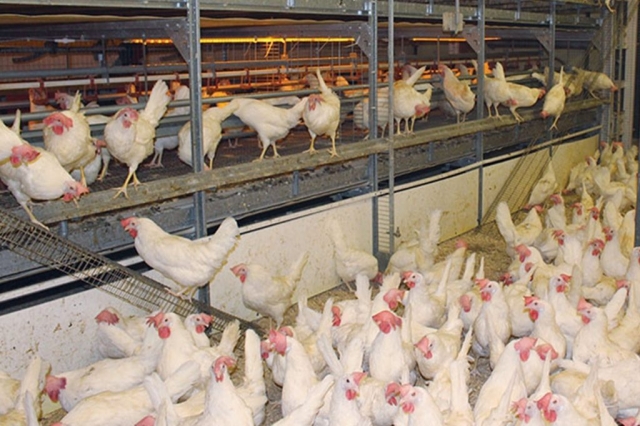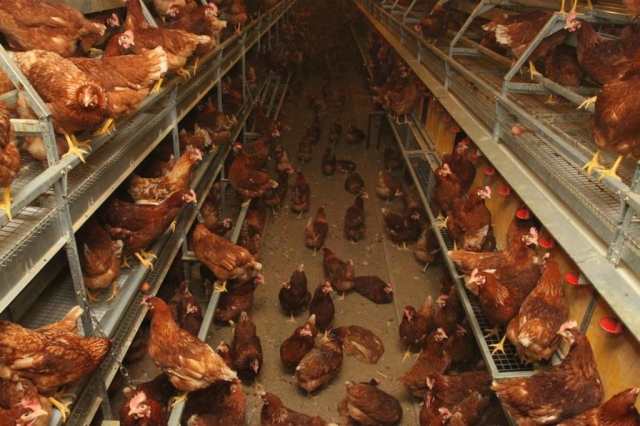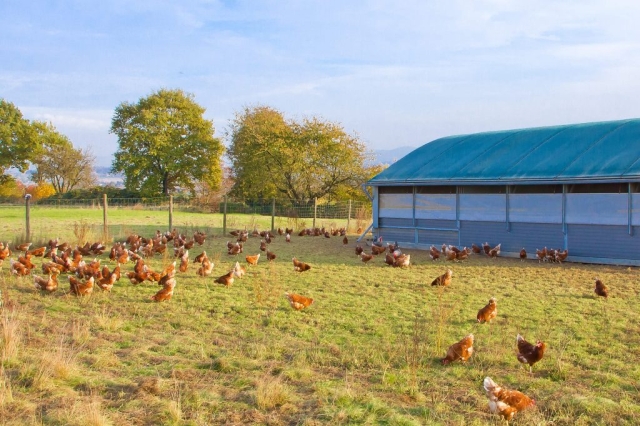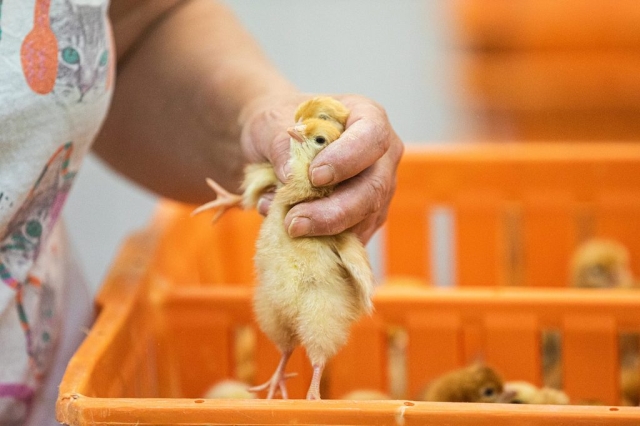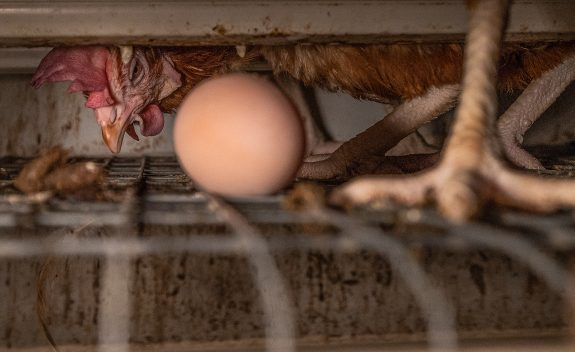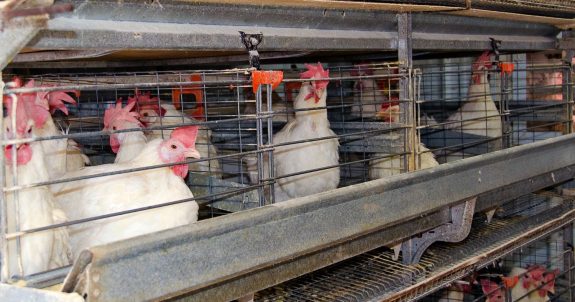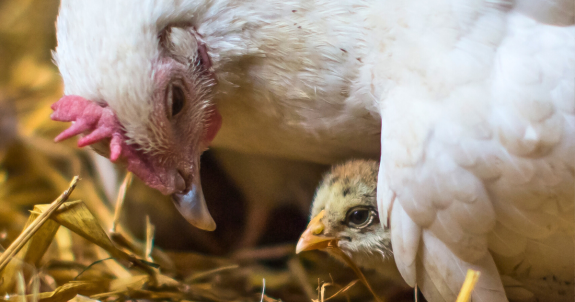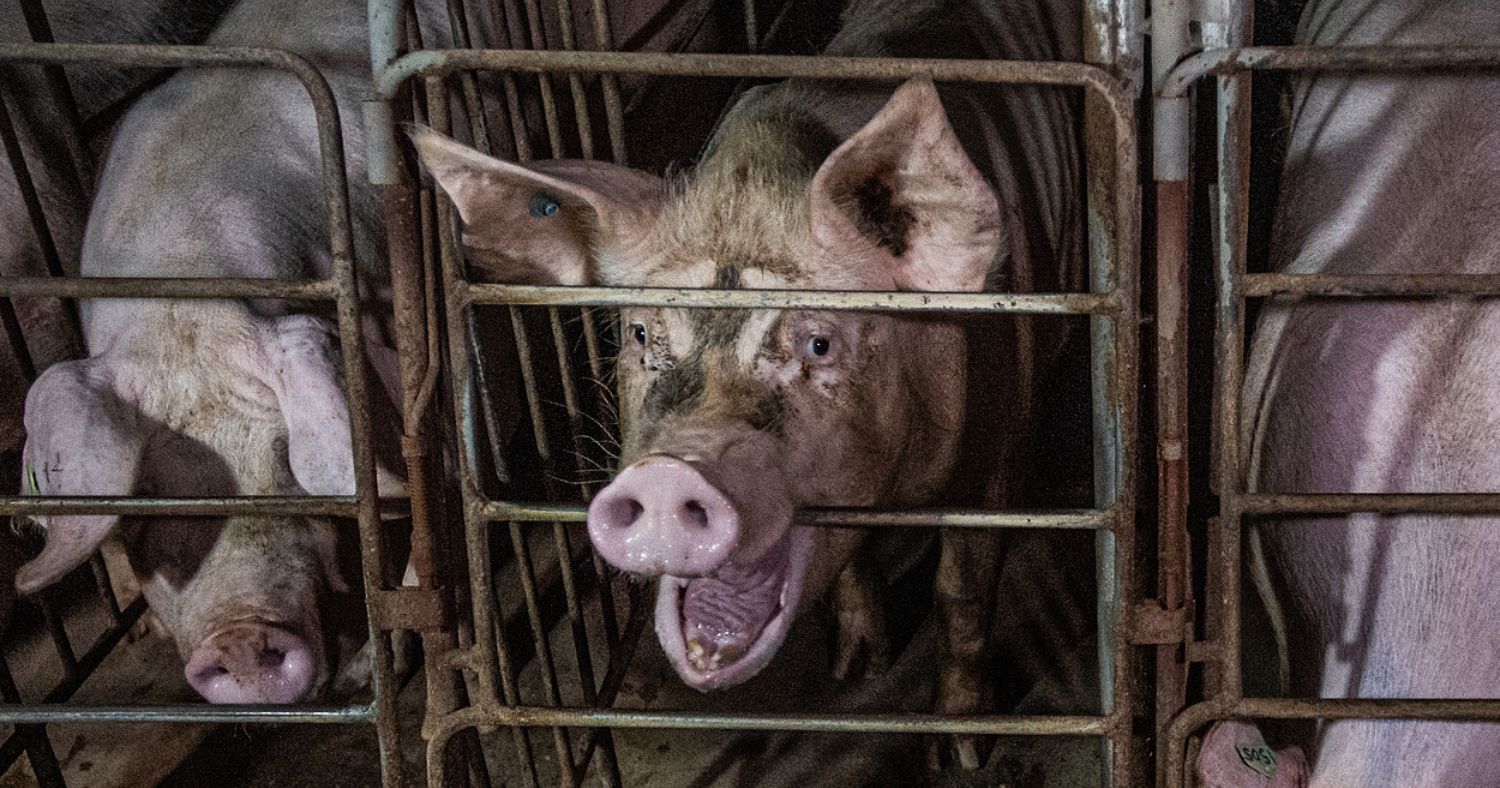When you pick up a carton of eggs at the grocery store, you’re confronted with various labels like “conventional eggs,” “enriched colonies,” “free run,” “free-range,” and “organic.” But do you know what these labels mean for the hens that lay those eggs? Do they mean hens have better lives, or are they mere marketing tactics?
Let’s delve into the truth behind these labels on Canadian egg cartons.
Cage Systems
Battery Cages
Battery cages (conventional cages or regular eggs) are used on a staggering 51.17% of hens in Canada. These wire cages are so small that hens can barely walk, and they don’t even have space to spread their wings. Each hen has space roughly the size of a sheet of paper, and cannot engage in any normal behaviours like dust bathing, perching, scratching, or nesting.
The cramped spaces often lead to hens injuring themselves on the wire floors. It’s very common for hens to die in battery cages, and they’re often left to decompose for days or weeks alongside live hens still producing eggs.
“Enriched” Battery Cages
“Enriched” battery cages (“enriched” colony housing, “enriched” colonies, furnished housing, or “enriched” eggs), are used for 31.58% of hens. “Enriched” battery cages are presented as an improvement over battery cages. But the truth is that they are barely distinguishable.
These larger cages house from 10 to 100 hens, and offer limited “enrichments” like perches and scratch pads, but fail to address the core issues. Hens in “enriched” cages still endure wire flooring, and they suffer from stress, disease, severe feather loss, and weakened bones due to lack of movement. They also still have the tips of their beaks sliced off, to reduce pecking injuries.
Cage-Free Systems
Cage-Free
Cage-free (free run eggs, aviary, or barn eggs) accounts for only 10.84% of hens. In these systems, hens have free access to the entire barn, which can be a single or multi-level aviary. They can engage in some of their natural behaviours, such as perching, taking small flights, and dust bathing on the litter floor. Nest boxes are provided, allowing them to exhibit their nesting instincts, and they can form their own smaller flocks and hierarchies.
Free-Range
Free-range hens make up only 1.36% of the industry. In addition to being cage-free, free-range systems provide outdoor access for hens to engage in more natural behaviours like foraging and sunbathing, weather permitting.
Organic
Organic eggs, representing up 5.06% of hens, have to follow organic standards that prohibit cages. Like free-range systems, hens kept for organic eggs are also allowed outdoor access when weather permits, and have additional requirements for organic feed.
All Egg Production Causes Suffering
Regrettably, Canada doesn’t regulate the conditions of hens used on egg farms. Canada has no laws to set out specific standards for each system. There are no laws about how much space hens should get on an egg farm, the maximum number of hens per barn, the types of enrichments they should have, the size of outdoor areas, or any other measure to protect the hens’ welfare. Labeling terms like “cage-free” or “free range” are also not overseen by the government, making their labels unverifiable and hard to trust.
All egg production—including cages and cage-free systems—causes inherent suffering. Male chicks are considered a byproduct of the egg industry, and are unwanted because they can’t lay eggs. They are often killed immediately after hatching, typically by being ground up alive in industrial macerators.
In nature, chickens can live for five to 11 years, but in the egg industry, they only last a year or two. Eventually, their bodies give out because they are so depleted from constantly laying an unnatural number of eggs. Once their productivity declines, hens are killed off to make room for more productive birds. Sometimes they are sent to slaughter and end up as chicken nuggets or pet food, and other times they are simply gassed to death inside barns.
To learn more about cruelty-free options, visit our egg alternatives page, where we explore substitutes that align with compassionate choices.
Banner: Existence | We Animals Media

